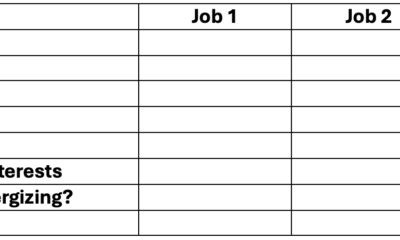Leadership
How Leaders Can Respond to Disengagement

Addressing the Decline in Employee Engagement: An Opportunity for Association Leaders
Recent data from Gallup’s annual report on workplace engagement reveals a troubling trend: employee engagement is at its lowest level in a decade. With only 31 percent of U.S. employees describing themselves as “engaged,” it’s clear that there is a pressing need for organizations to focus on boosting employee morale and commitment.
The decline in engagement is particularly pronounced among Gen Z workers, highlighting the importance of addressing the factors driving this trend. According to Gallup’s research, issues such as a lack of clarity of expectations, a feeling of being cared for as individuals, and opportunities for personal development are contributing to disengagement.
For association executives, these findings underscore the importance of prioritizing employee well-being within their own organizations. By clarifying the organization’s purpose, investing in talent development, and promoting a culture of mutual support and recognition, leaders can create a more engaging work environment.
The sources of disengagement that Gallup identifies are areas where associations can make a meaningful impact.
Additionally, creating a culture where employees feel empowered to shape the organization’s values and norms can foster a sense of ownership and investment in the workplace. A case in point is Lego, whose culture is built on principles of bravery, focus, and curiosity, reflecting the playful spirit of its brand.
Association leaders can also play a role in addressing industry-wide employee disengagement issues. By setting standards, providing support networks, and offering personalized development opportunities, associations can help professionals navigate challenges and feel valued within their field.
While associations excel at supporting established industry leaders, there is a need to also focus on nurturing younger and less experienced members who may require additional guidance and mentorship. By recognizing and addressing the unique needs of all members, associations can turn employee disengagement into an opportunity for growth and community building.
Ultimately, the key for association leaders is to proactively address employee disengagement both within their own organizations and across their industry. By fostering a culture of support, development, and belonging, associations can play a vital role in enhancing employee satisfaction and driving long-term success.
The post How Leaders Can Respond to Disengagement appeared first on Elite League.
-

 Professional Development1 month ago
Professional Development1 month agoDrawing up your strategy
-

 Personal Growth2 months ago
Personal Growth2 months agoSucceeding as a ‘parentpreneur’: Top tips
-

 Videos2 months ago
Videos2 months agoGreat Leaders INSPIRE Others To Do Great Things
-

 Productivity1 month ago
Productivity1 month agoHow to Increase Remote Work Productivity
-

 Productivity2 months ago
Productivity2 months agoTips for Boosting Work Productivity
-

 Productivity1 month ago
Productivity1 month ago5 Ways to Increase Your Personal Assistant’s Productivity
-

 Leadership1 month ago
Leadership1 month agoHow to Tackle Big Challenges
-
Leadership1 month ago
Cutting Through the Clutter of Internal Communications































